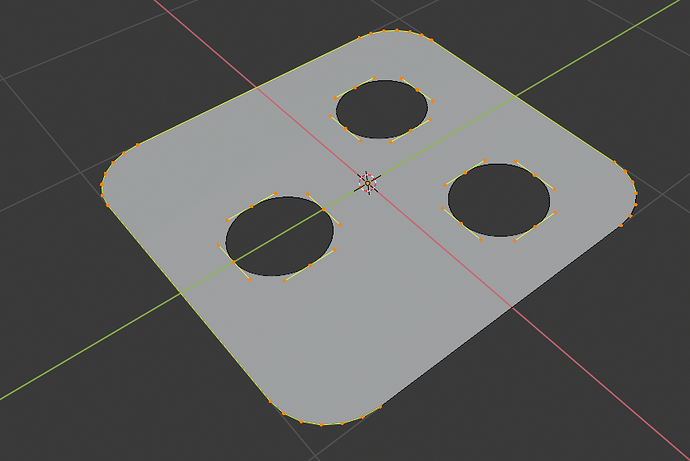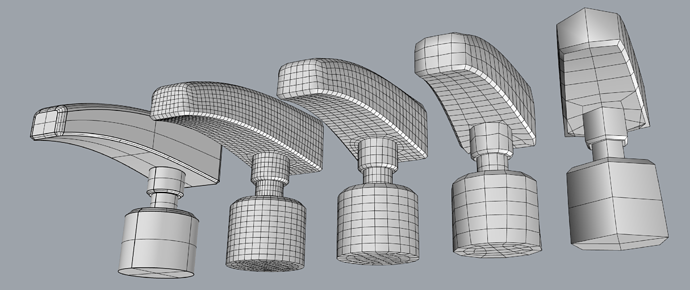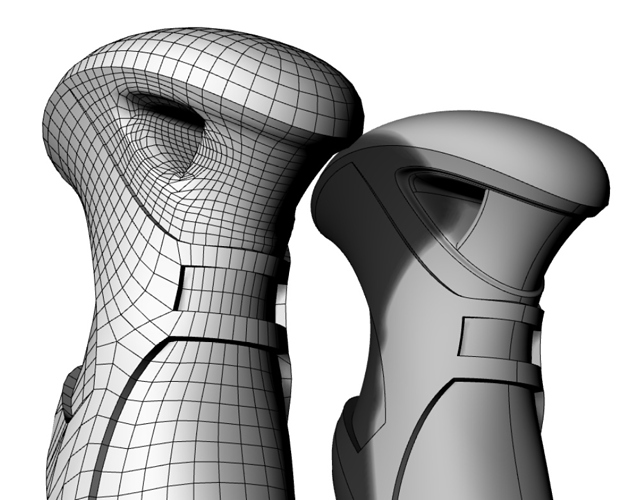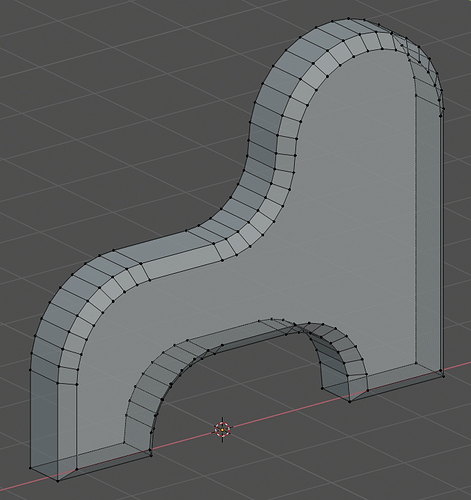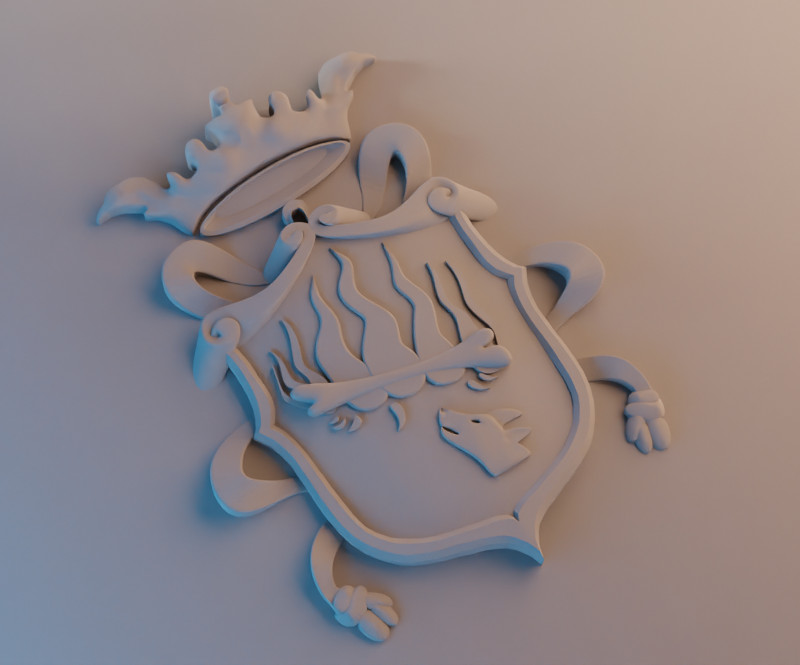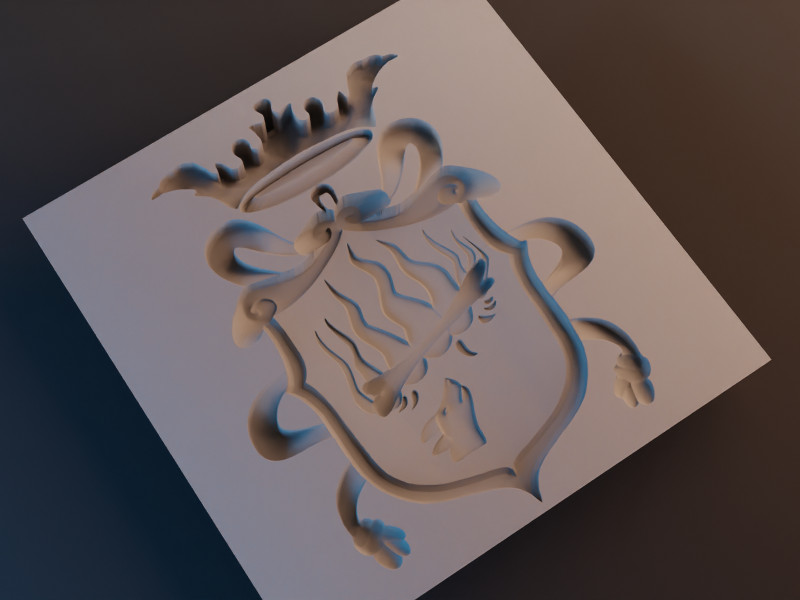in 1980 I was 1 year old ![]()
Because it is completely new math engine.
There are no devs in Blender to handle such task.
Software like Sketchup are built around that feature, so software have to be borned with such abilities.
What is? which engine, we already have a Bezier engine to produce 2D curve objects that support holes… Sorry I missed your point.
here is how sketchup handles it.
It have that “CAD mesh” abstract layer to perform such a thing on flat surfaces without booleans.
It was built around that feature.
In 1980 I was still not too old to chase your mum… ![]()
![]()
![]()
![]()
here’s what I proposed here
To the author of the remesher QuadriFlow
I think it would be an interesting alternative to bring together NURBS and Bézier surfaces with meshes
I tried to do remesh of objects with a single dimension, because as you can guess we could have big advantages in the repopology of entire surfaces and then be able to assemble them in a single object … but the remesher hardly manages to keep the precise boundary and preserve sharps …
it also destroys the holes, and in any case distorts them, while above all they should remain as faithful as possible to the original geometry.
@ Sebastian Parborg Reasoning:
The algorithm should first scan the object, identify all the sharpen edges, divide the object into many objects made of hardsurfaces, remesh all of them, keeping the boundary edges precise to the boundary edges of the adjacent hardsurfaces, and then unify the surfaces into a single object by making a vertex merge.I think it would be also really cool, if the quadflow remesh algorithm could create objects faithful to the original shape of objects made in subdivision surface.
so
original mesh = lowres remeshed object + sundivision surface.
Greetings Masters
I seem to remember Intergraph IGDS (probably 1980’s best CAD package) you made a polygon, then we worked in points, lines and polygons not vertices, edges and faeces ![]() as an outside shape, then drew another inside it as a “hole” the hole immediately appeared in the outside polygon - simples! Just like blender’s 2D Curves he noted for the record.
as an outside shape, then drew another inside it as a “hole” the hole immediately appeared in the outside polygon - simples! Just like blender’s 2D Curves he noted for the record.
Pretty picture of what I mean, a surface with three holes - no messy topology anywhere, just need this as a mesh… Maybe a first step is to have flat surfaces with holes like this, there is very little need at this stage to push for anything other than flat surfaces with holes, maybe then we can work on other things as additions.
Quadriflow remesher have an issue - it’s resolution is constant.
I trying to design variable density remesher for years - it is possible by math, but too tough for me.
That my retopology research and tests and modeling was all about.
it is still at the embryonic stage to have a serious approach … there is work to be done … but meanwhile it is here … and it starts to work.
it would be great if it reached the states where the rhinoceros boys arrived

the two worlds begin to mix …
the mesher apps approach the cad surfaces apps
and the cad surfaces apps approach the mesher apps
Your top picture - I don’t see any advantage in all that mass of vertices to describe a part that is displayed near perfectly in the images at the back, presumably the original CAD model, all that has been gained is a mess of unnecessary faces and a loss of hard definition…
hehe, it was a test to prove the defects … still it is nowhere near anything you can use …
in fact it was a post to try to give some advice to the quadriflow dev
rather take into account the conceptual idea that I have set out, but if they could put it into practice …
My hope is that they reach the levels of the images from the remesher in development for rhino
It certainly did that! As a mechanical engineer and former designer, I am looking for the minimum of data required to define a part, big Ngons are ideal, joined by sweeps of minimalist quads to define fillets and bevels. We as precision modellers do not need 56 billion polys to define what is a flat surface! Just one flat Ngon with, optionally, a few holes in it…
EDIT:
This is nice engineering topology:
Easy to make, kind on the eye, no need for sub-divs, sculpting, etc. just give us flat Ngons with holes in them. Architects will love this more than mechanical engineers, after all aren’t 99.999999999% of building walls flat?
I explain to you,
is the shield of a heraldry that I made,
which will then be milled with a cnc to make shapes with some material, such as cement (in english is concrete? bho)
it was made with blender bezier surfaces and then converted to mesh and remeshed with the addon boundary allignerd remesher, it was simply the most immediate and ideal object to do tests (the holes on the left are boolean on the mesh) to see how quadflow behaved with ![]()
Anyway, there is still problem to get a NURBS from mesh quad surface.
Here are our attempts.
The only software that can make such thing seems to be still Siemens NX
Onestly, I didn’t even think about this utility of converting mesh to nurbs, I don’t see the advantages in my workflow, while to convert a nurbs surface that has a good topology I can then mix the work with other meshes …
are you referring to my proposal to create a low resolution remesh and then enable the correct display in opensubdiv?
hehehe this is my dream. ![]()
Opensubdiv also has parameters to set edge and vertex crease … so the algorithm, in addition to creating low resolution meshes, will also set these parameters to search for the most faithful original form.
in the near future, we will have machine learning algorithms that will do these things easily
Mesh to NURBS is often used in CNC as far as it is much easier to make organic surfaces in mesh.
I don’t see why need to change anything to nurbs, when actually we have nurbs… what we don’t have is a great implementation.
There was a time when blender did not support the ngons.
Those NURBS are from that time.
Too much efforts are needed there to make something useful from that kind of NURBS.
What are the possibilities for having a “hybrid” object that can carry both 2D curves, made in the conventional manner then joined in and conventional mesh vertices, edges and faces? This object would not support sub-divisions, decimations and sculpting, etc. It would be even better if this “CAD” object also supported text, so we could have proper dimension features that would render with an implied thickness for the dimension lines. Given that this object would be drawn accurately, there is no need for most, if not all, modifiers.
@Howard_Trickey Is this possible?
clockmender:
This idea of a hybrid object is interesting in that it could combine the ability of NURBS to make mathematically precise curves with the flexibility of Mesh to make anything and not worry about the messiness of how to fit square patches into an arbitrary topology world.
However, I am not easily seeing how this would be easy to program. It feels like it would be harder to program than other solution to getting holes into Meshes discussed earlier in this thread. For example, what to do if the curve that is suppose to be in a face doesn’t lie exactly in the same plane as the face? This is in addition to the fact that all of the tools like inset, bevel, vertex slide, subdivide, etc., would now have to be made to work on a combination of types or else convert all of them to mesh anyway.

